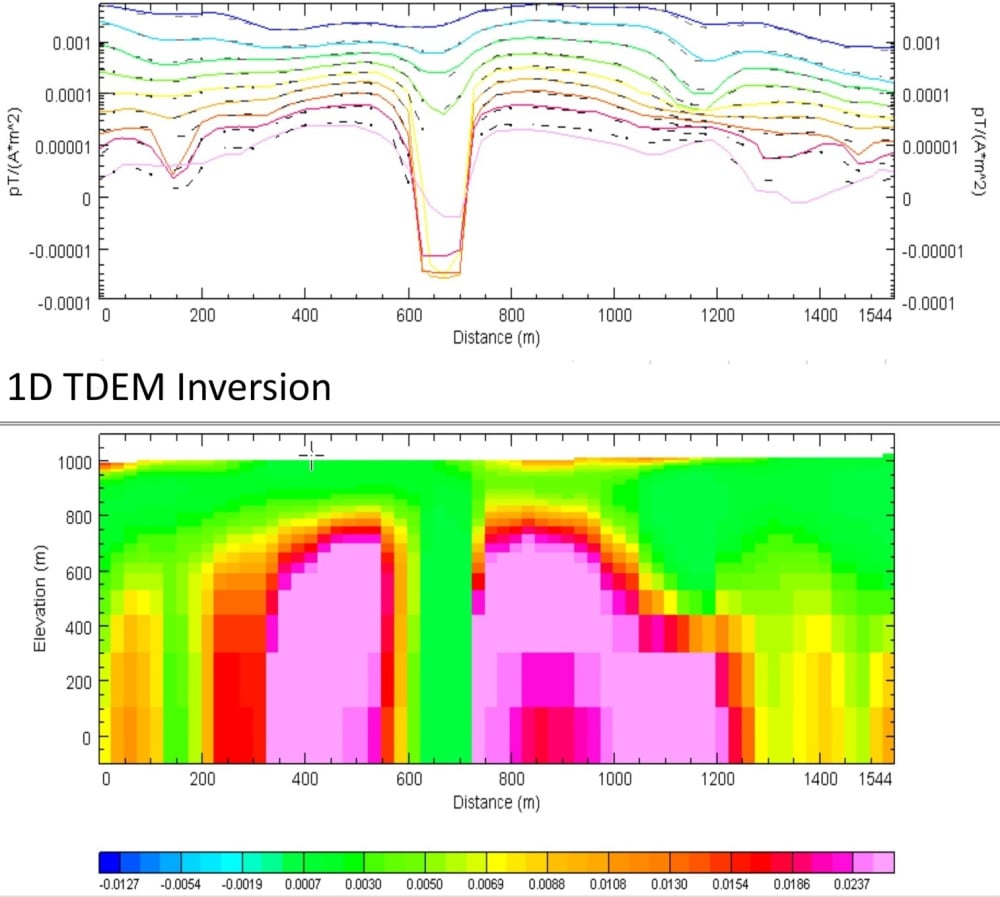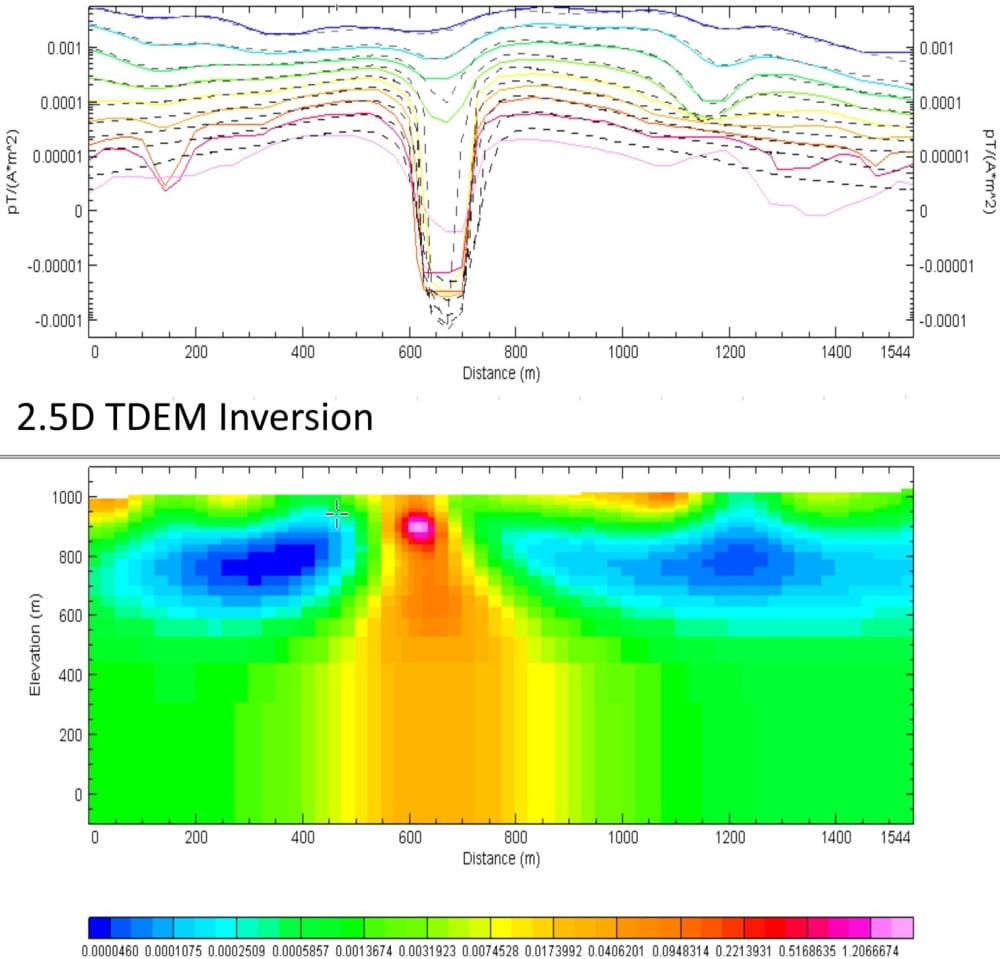Beyond 1D: Smarter TDEM Inversion for Complex Geology
Why do some inversion results look nothing like the geology you expect?
We recently shared some thoughts around this topic as a conference. We discussed practical strategies for tackling this challenge using advanced TDEM techniques.
✅ What we explored:
- Working with TDEM data to map conductive bodies
- Comparing inversion approaches for better geological accuracy
Key insight:
1D inversion works well for flat or gently dipping layers (~30–45°), but it struggles with compact, intrusive conductors. The assumption of flat layering often leads to misplaced anomalies—or missing them entirely.
Why it matters:
If you rely only on 1D inversion, you might interpret two highs with a low between them—nothing like the true conductor. Complex geology demands more than first-pass methods.
The game-changer:
We applied VOXI 2.5D TDEM inversion, which handles complex structures. The result?
✔ Correct positioning of conductive bodies
✔ Visibility of dips an possible faulting
✔ Actionable targets for drilling
Practical tip:
Start with 1D inversion for quick screening, then use 2.5D inversion on localized anomalies for accurate interpretation.
👉 Want to learn more or share your experience? Drop a comment or reach out, we’d love to hear your thoughts and experiences!

